In 2024, the software-as-a-service (SaaS) market will be worth nearly 250 billion dollars. With so much competition, how can your SaaS brand stand out? One way is through affiliate partnerships.
Affiliate marketing is a low-cost, full-funnel approach to marketing — half of US marketers use affiliate partnerships up and down the funnel. Plus, affiliate partnerships cut through the noise of oversaturated ads people tend to block. This blog dives into the ins and outs of affiliate marketing and how the right partnership technology can solve common marketing challenges in the SaaS industry.
Contents:
- Defining affiliate marketing [+and why it helps you stand out]
- The difference between B2B and B2C consumers
- Adapting your SaaS affiliate program to match your pricing
- 5 crucial factors for building successful B2B SaaS affiliate partnerships
- Bringing your affiliate program onboard with easy tracking
- 3 examples of SaaS affiliate programs knocking it out of the park
- Affiliate marketing allows SaaS brands to keep up with competitors and ad influx
Defining affiliate marketing [+and why it helps you stand out]
Affiliate marketing is a powerful channel for reaching your target audience without relying on traditional ads or pricey campaigns.
The channel is performance-based at its core. Instead of growing your name recognition alone, you’ll team up with talented affiliates—-rewarding partners for each new lead, purchase, or sign-up sent they generate. Rather than paying for ad campaigns upfront and hoping for good returns, you’ll compensate affiliates for tangible results. Your marketing budget goes much further by cutting down on wasted time and only paying for results.
Through affiliate partnerships, you’ll have top content creators, influencers, authoritative blogs, and deal sites as your brand ambassadors. The right affiliates can highlight your software’s strengths and drive traffic to your page.
Mapping out the typical customer journey
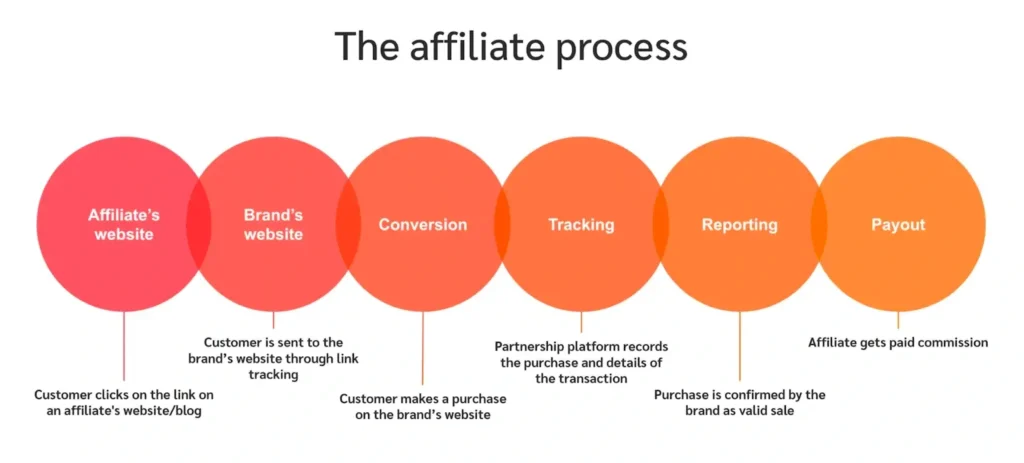
Many B2B customers go through similar buying stages before signing up for software. To solve a particular business problem, they:
1. Research industry blogs or guides for the best software solutions
Authentic reviews and recommendations carry more weight than generic ad campaigns. For instance, impact.com’s Customer referral marketing research: A consumer perspective report reveals that 86 percent of consumers find recommendations and reviews important in their purchase decisions. In comparison, only 2 percent consider traditional ads important in purchasing decisions.
2. Compare options using pros and cons on top comparison websites
Potential customers will check what options match their needs—and a knowledge partner can help them make the best decision.
3. Make a decision and buy a software product
This is where traditional affiliate partners, discount codes, and enticing deals help consumers reach the final purchase page. Affiliate marketing opens opportunities at each touch point in the customer journey. Relevant, well-supported partnerships help you get ahead of your competition by driving traffic and interest in your brand from the initial research phase.
Finding the perfect partnership fit for SaaS brands
There’s a wide range of partners and affiliate strategies to experiment with. Depending on your industry and software solutions, some affiliate types will fit better than others.
Traditional affiliates
These partnerships are common in retail, including coupon, deal, and loyalty sites. Although more common in retail, many software companies also succeed with these partners.
Commerce content
This editorialized content mentions your brand and aligns with the publisher’s typical topics. Think buyer guides, listicles, reviews, and comparison articles. For instance, this article from PCMag compares productivity software and apps in depth. Users can click on the affiliate links, which take them directly to the brand’s purchase page.
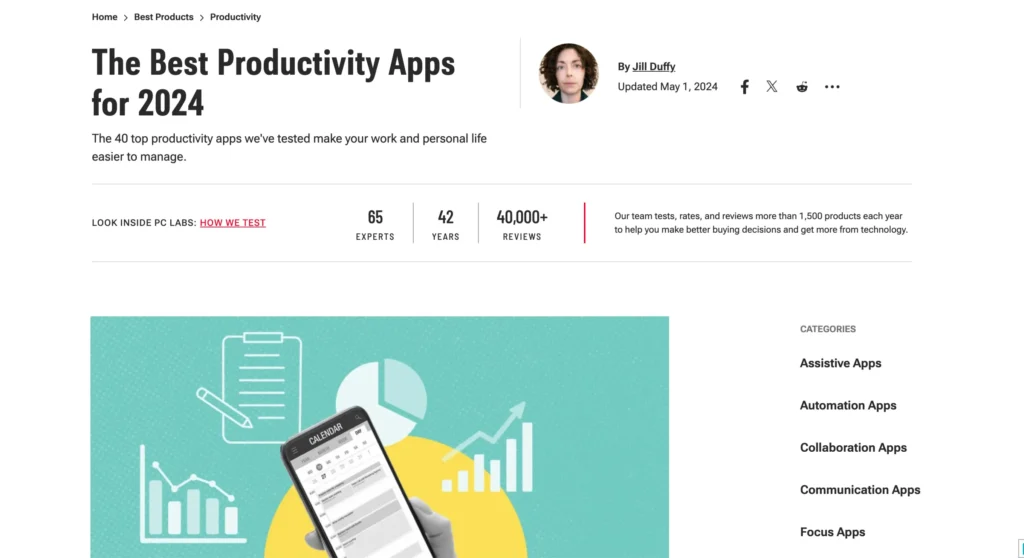
Influencers and subject matter experts (SMEs)
Social influencers, opinion leaders, and subject matter experts (SMEs) make convincing affiliates for SaaS brands. These creators have already built a following through their unique takes, content, and style.
Sophie Miller, Director of Pretty Little Marketer, promoted Hootsuite’s 2023 Social Media Career Report to her audience of social media marketers and freelancers. Sophie’s post reached over 5,000 likes and nearly 300 reposts.

Referral marketing/customer advocates
Referral marketing relies on the power of word-of-mouth recommendations. It involves incentivizing existing customers to introduce your business to their friends, family, and colleagues.
RealtyNinja used referrals to enhance business growth and customer retention. The results showed a 2x higher conversion rate for referrals vs paid ads, and 16 percent of new users came from referrals.
Educators
These partners create high-quality educational content— in-depth courses and tutorials—that teaches users how to get the most out of your software. These creative partners help answer potential customer questions and encourage them to try your software.
Strategic brand-to-brand
Software companies can form alliances with other companies to expand their reach. For example, an accounting firm might collaborate with Quickbooks and recommend their software over competitors.
Native integrations
SaaS vendors can’t build everything for everyone. However, they can forge partnerships with other providers to build holistic solutions that solve multiple customer problems. Canva partnered with HubSpot to allow users to create email templates and other design assets by using Canva directly within the HubSpot platform.
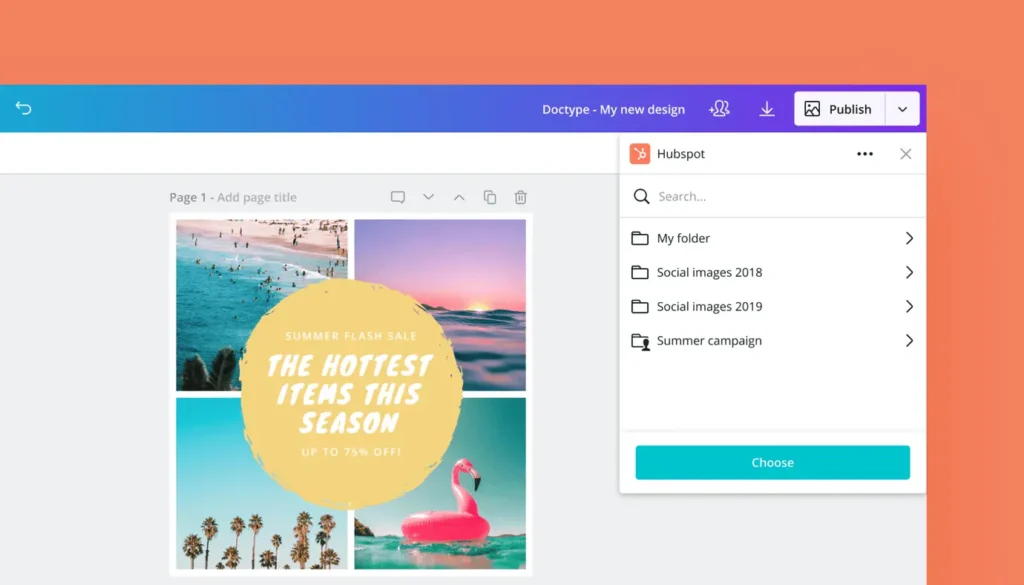
The difference between B2B and B2C consumers
In B2B marketing, the intended audience differs from business-to-consumer (B2C) marketing. Adam Glazer, President of B2B affiliate marketing agency Partner Commerce, breaks down a fundamental difference:
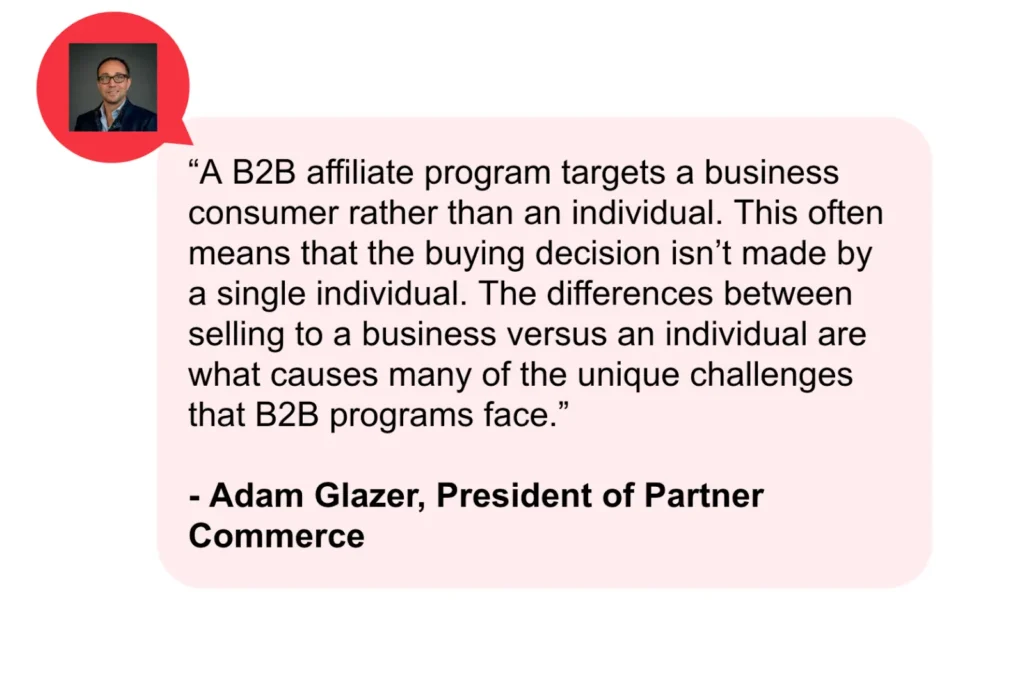
You’re usually not trying to reach an individual or single user. Your marketing must win over someone shopping around for their team members, startup, or established brand. They face specific business problems and seek the best possible software solutions. Successful B2B partnerships are professional collaborations between two parties, helping each other stand out and reach mutual goals.
How affiliates create value for SaaS Brands
Affiliates can become compelling guides for your potential customers, solving a big problem for the SaaS industry. The wide range of competing products means your potential customers are overloaded with information. These buyers turn to influencers, communities, associations, media, and other resources to help them weigh their options. Here’s where your partners can highlight your product’s strengths and send people your way.
Affiliates play a massive role in your success—even if sales numbers don’t instantly rise. Zoe Mackay, Strategic Partnership Manager at Technology Advice, notes how skilled partners promote products through the full marketing funnel:
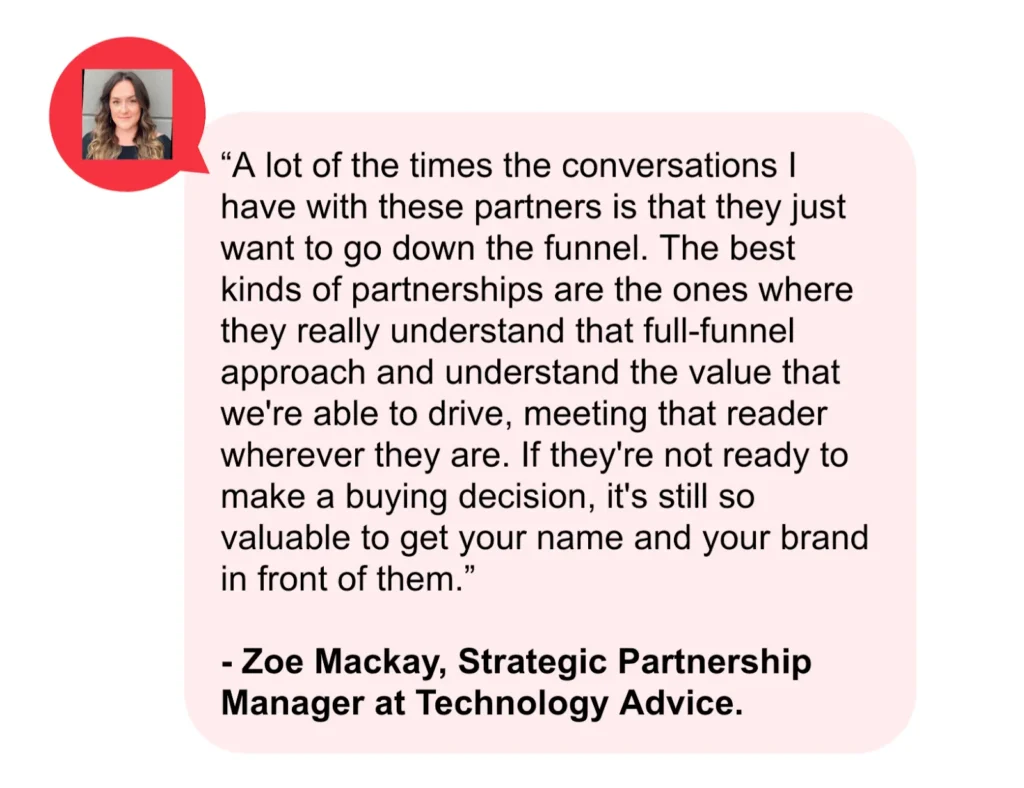
Talented partners help you spread the word and plant seeds for future growth. They can also reach potential customers from unique angles. Maybe your paid social media ad campaigns aren’t landing like they used to, or your SEO efforts have reached a ceiling. In this case, you can diversify your marketing mix with publishers, influencers, comparison sites, and more.
What makes B2B SaaS partnerships unique
Since SaaS brands offer relatively complex products compared with typical retail, you’ll need access to detailed data when choosing affiliates. Trying to reach the broadest audience isn’t always the best approach.
Define who you’re trying to reach and look for partners with similar audiences, as well as the skills and expertise to appeal to this audience. For example, some partners may specialize in certain types of audience/client profiles: small businesses vs. large-scale enterprises, healthcare providers vs. public sector organizations, and so on. Certifications or accreditations for specific skills and industries can also be positive.
Finding the perfect partners and busting affiliate myths
You’ll find potential solid partners on Instagram, Facebook, and TikTok. But don’t overlook content creators and leaders who appear on panels at industry events, write opinion pieces in trade magazines, and participate in discussions at industry forums, niche Reddit threads, and LinkedIn communities.
Even with your ideal traditional affiliates and influencers, you might encounter some common B2B SaaS myths:
- Are traditional affiliates only interested in partnerships with retail brands?
- Can they adapt to B2B marketing instead of focusing on individual customers?
These myths shouldn’t hold you back from leaning into affiliate marketing—especially when marketers are seeing fantastic results. Nancy Harnett, Head of Affiliate Marketing at HubSpot, breaks down the benefits of using affiliates for software services.
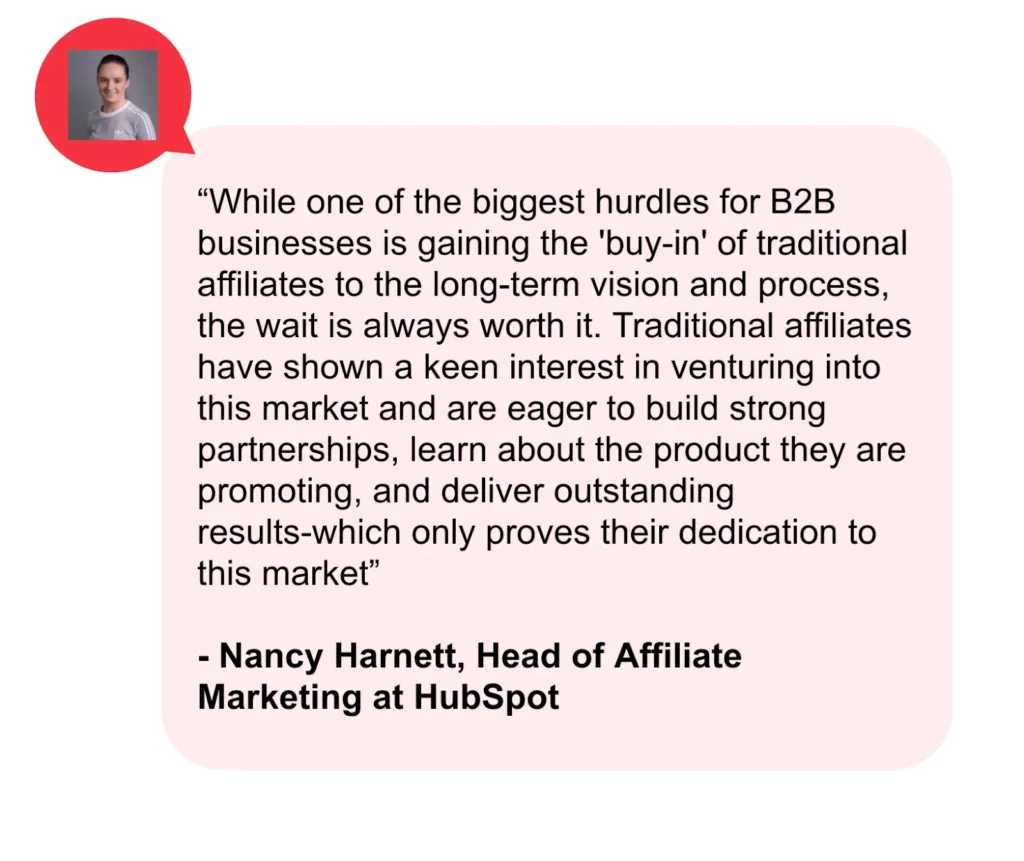
Spread the word and keep the messaging clear across a diverse partnership mix. With the proper support and customizable payments, you can build thriving partnerships with a wide range of partners.
Adapting your SaaS affiliate program to match your pricing
SaaS brands use different customer pricing models. Your choice impacts how you’ll reward and incentivize partners. Let’s break down the main SaaS customer options.
- Freemium provides users with a basic set of features for free with advanced features for a premium fee.
- Free trials allow users to try your product free of charge for a certain period.
- Flat-fee subscriptions simplify the cost of your service down to a single price.
- Package-based subscriptions sell access to variants of your SaaS solution according to usage volume or feature packages.
- Per-user pricing charges based on the number of activated logins or concurrent users
- Custom pricing skips the self-service approach for a higher-touch sales process that matches the price to a customer’s complex needs.
These models aren’t equal when it comes to value for your brand. Package-based or flat-fee subscriptions earn money directly—compared to a free trial or freemium version, which could lead to later purchases.
With flexible commission options through a powerful partnership platform like impact.com, you can automate the process and ensure payments are always on time. You should pay partners for free trial signups or wait until they convert to paid subscriptions. Or, you could reward affiliates more for promoting premium software versions over basic packages.
The choice depends on what key performance indicators (KPIs) you’re focusing on. Here are two examples:
- Brand recognition and awareness. Team up with affiliates who have established audiences and pay for new free trials.
- Raising revenue and promoting premium features. Partner with industry experts and offer commission rates for each customer signup or upgrade to a premium version.
SaaS brands aren’t stuck with a single, rigid way to reward affiliates. Instead, you can tailor your commission options and tiers to promote your desired partner behavior and results.
5 crucial factors for building successful B2B SaaS affiliate partnerships
Finding the best-fit affiliates depends on your brand’s goals. Keep these five key metrics in mind for assessing partner compatibility:
1. Complementary business objectives
Partnerships work best when the value they create together exceeds what they create alone. Their overall goals may be different, but they should be complementary.
2. Brand fit
When partners collaborate, their brands become associated with each other in the minds of their customers, audiences, and other stakeholders. Be strategic about the message your partners send potential customers, but allow them autonomy to use their brand voice.
3. Competitor status
Working productively with a competitor can build your credibility and help you tap into new audiences, but you shouldn’t sacrifice your competitive edge.
4. Ability to work together
Partners need to be able to work with you toward a shared outcome in a collaborative, transparent, and mutually rewarding way. Honest communication and shared goals go a long way towards successful project collaboration.
5. Desire to work together
Finally, both partners have to want it. Reach out to potential partners, but make sure the final decision is theirs. Making a partnership work requires a mutual commitment of time and resources.
Bringing your affiliate program onboard with easy tracking
With the benefits of affiliate partnerships—and traits to look for partners—in mind, how can you get started? You want to get the most out of adding affiliate marketing to your marketing mix. That means not going in blind or improvising along the way.
Using the best tools and partnership management software will save time and skip major headaches. Using impact.com’s purpose-built partnership platform, you’ll optimize your partnerships—keeping both sides aligned and working towards shared goals.
As we’ve covered, B2B SaaS marketing creates some unique hurdles. You’ll need the right partners to make the implementation worth the cost. Let’s break down the core advantages of impact.com’s platform and how these can solve common B2B challenges.
Discover and Recruit
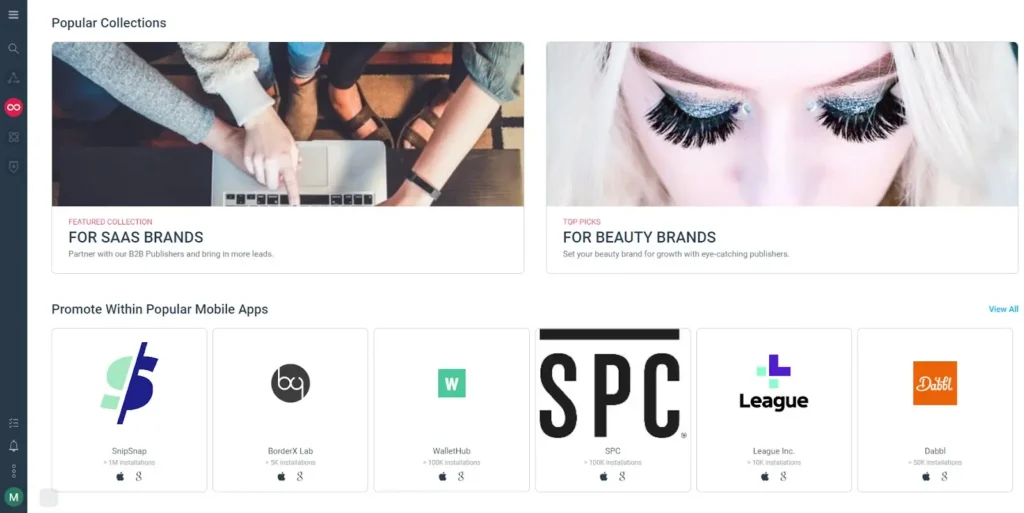
The impact.com Marketplace lets you search curated partner collections and lists, helping you zero in on the affiliates that can reach your target audience. With AI-driven recommendations and customizable filters, you can find and reach out to a wide range of skilled affiliates and creators.
Contract and Pay
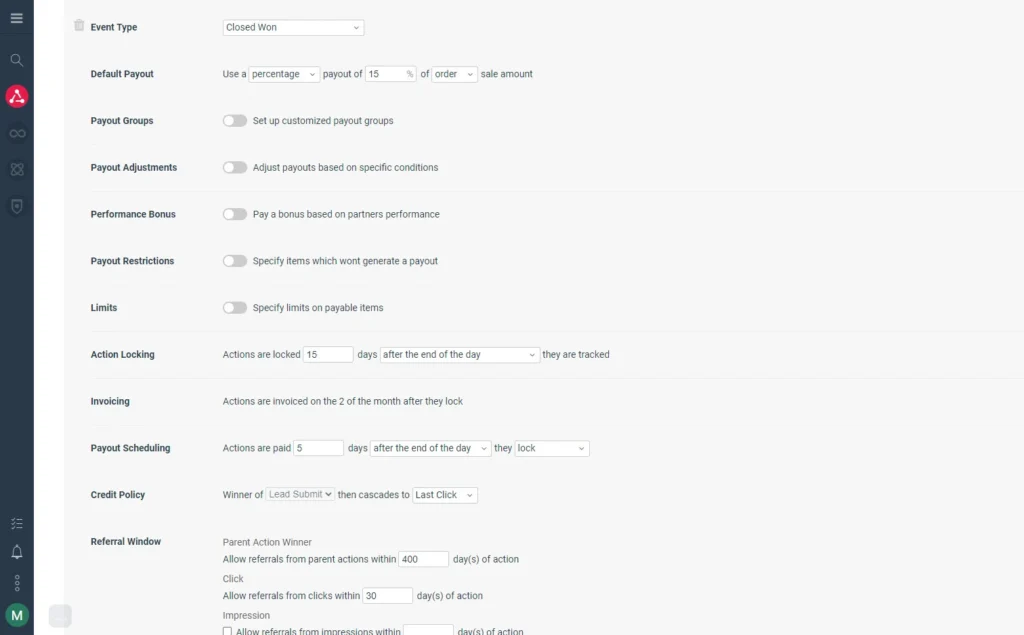
You won’t have to worry about losing great partners because they feel limited by rigid commission structures. Flexible contracting, 70+ international currency options, and Dynamic Payouts simplify payments. Set up commission options and tiers with over 100 unique factors—adjusting payouts based on your pricing models, customer type, order size, and more.
Track
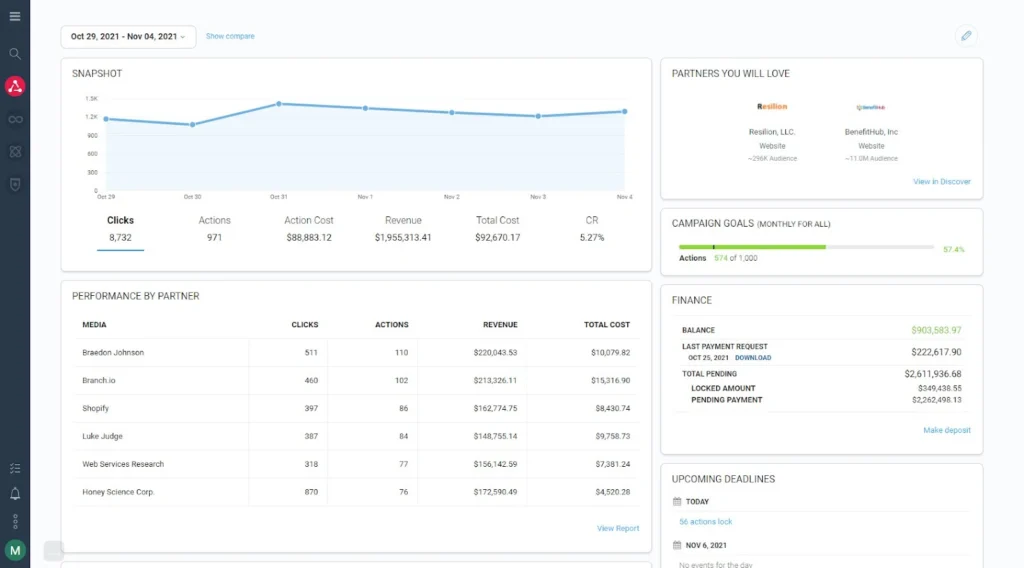
Accurate tracking is the beating heart of a thriving affiliate program. With impact.com, you can track more than just sales—t from leads to conversions to mobile app installs. Using that data, you can refine campaigns, train partners, and improve your marketing strategy.
Zoe Mackay, Strategic Partnership Manager at Technology Advice details her experience tracking data on impact.com:
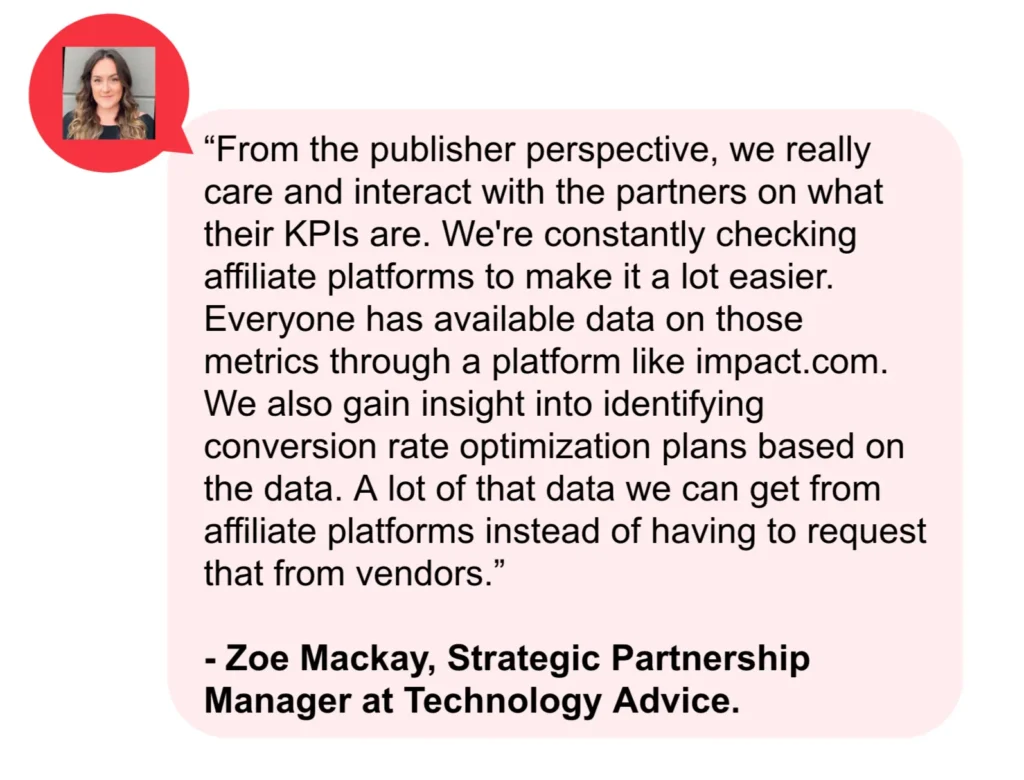
Engage
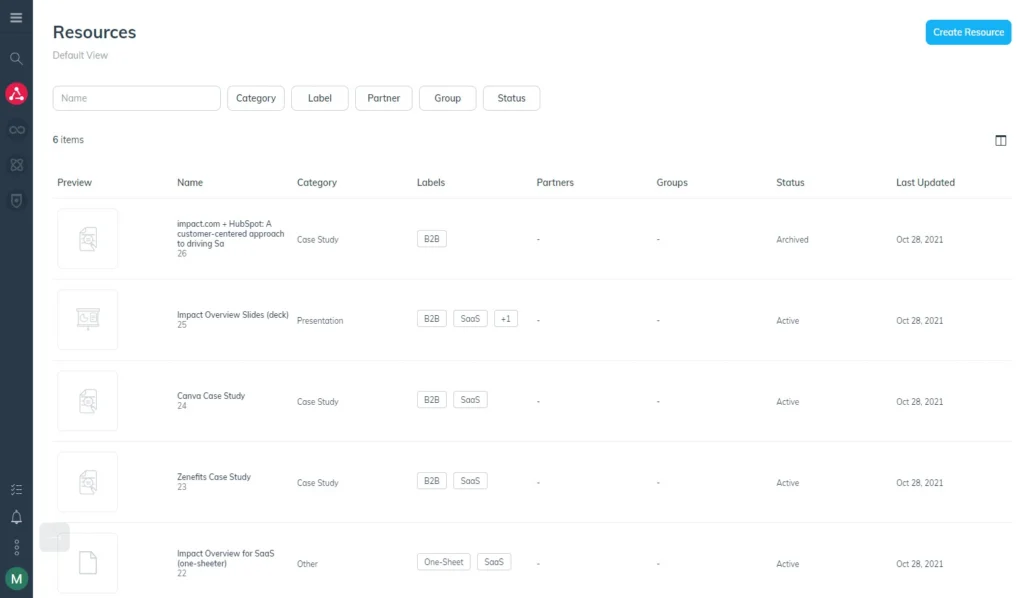
Maintaining healthy affiliate partnerships should be a top priority. That way, you’ll retain top performers and spread positive word of mouth to other potential affiliates. The impact.com platform provides automated engagement tools, integrated communication channels, and easy ways to share resources with partners. You can check in, share brand assets, and provide useful feedback in one place.
Protect & Monitor
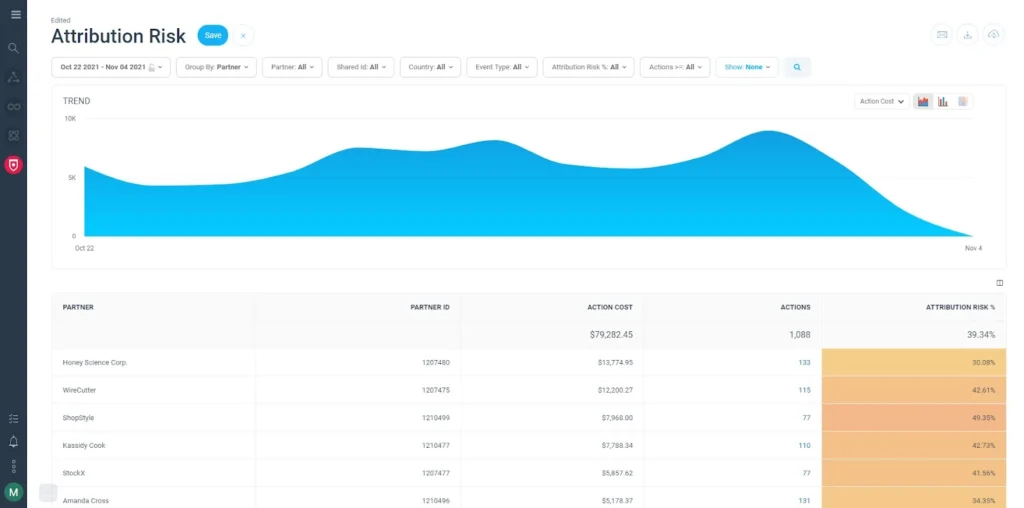
Using impact.com, you’ll have strong security measures built in instead of relying on third parties. Your data, partners’ data, and customers’ data stay safe on the same all-in-one platform. These automated safeguards are crucial for scaling your affiliate program without risking data breaches.
Keemia Ferasat, Manager of Global Affiliate Marketing & Partnerships at Microsoft 365) notes the benefits of impact.com’s security features:
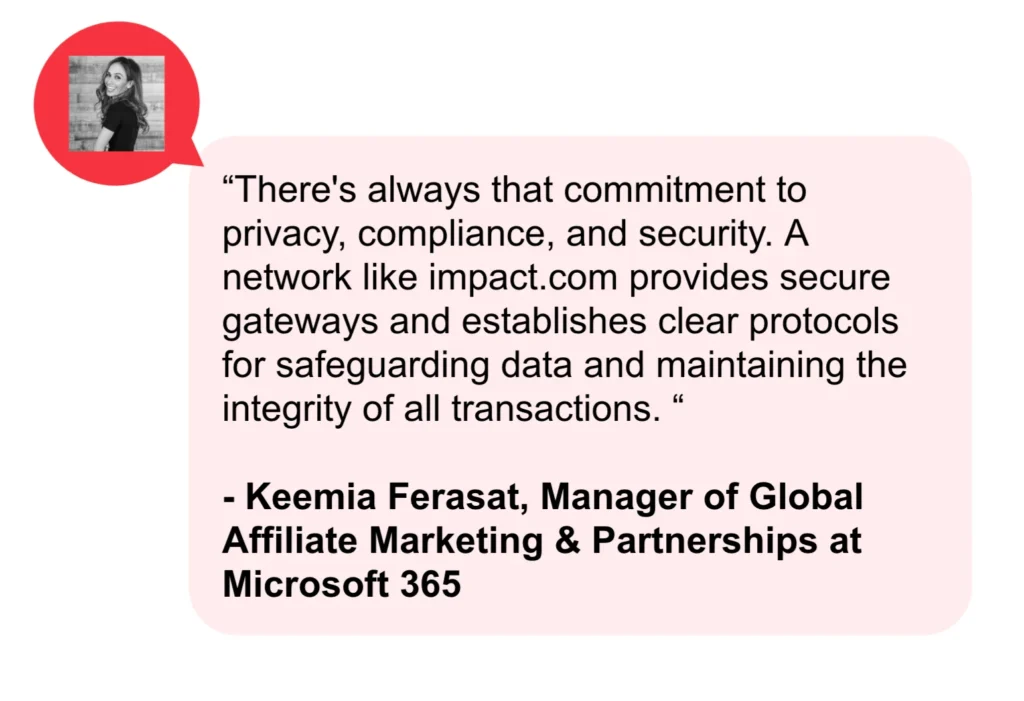
Optimize
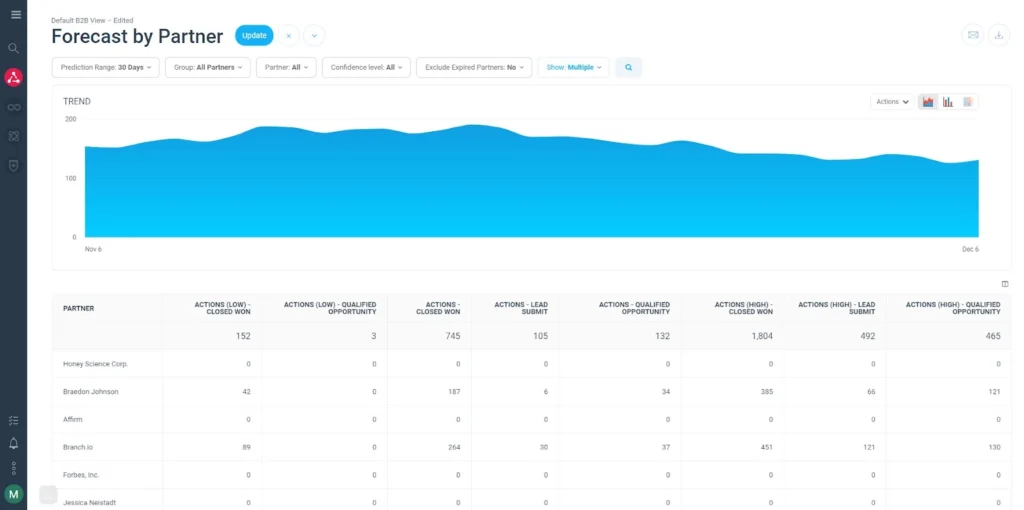
With Optimize Reports on the platform, you can use real-time data to highlight each partner’s strengths—recognizing and seizing opportunities immediately. Rather than just tracking the final click in the customer journey, you’ll see how different partners played a role along the way. Then, you can ensure everyone gets rewarded fairly. These features help you set your program up for lasting success with actionable insights on each partner.
3 examples of SaaS affiliate programs knocking it out of the park
Some savvy SaaS brands have been leaning into affiliate marketing—using the tools and automation available to hit their goals. Check out these examples.
HubSpot
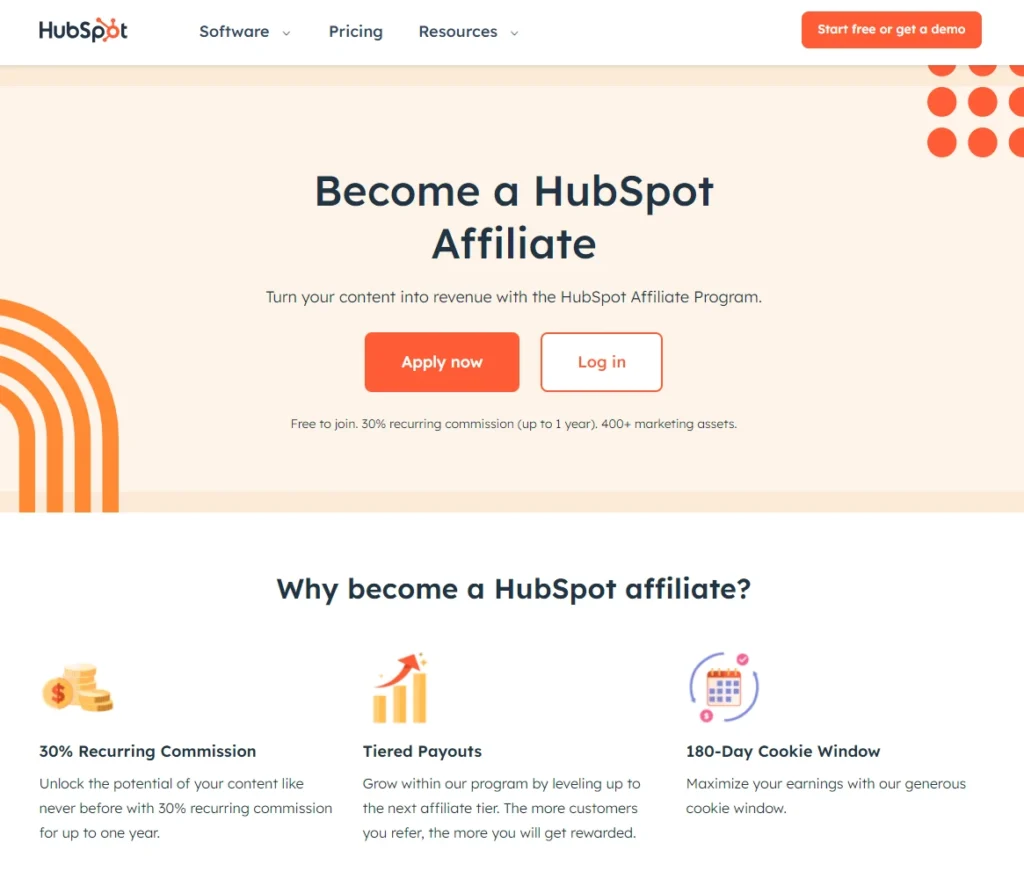
HubSpot’s previous affiliate tools were rigid and held their program back, resulting in potential partnerships and marketing opportunities being lost.
With impact.com, HubSpot introduced flexible payment options and tiered rewards for long-term partners. Affiliates can now reach HubSpot directly and adjust commissions, delivery dates, and more. After the switch, HubSpot saw an incredible 50 percent boost in affiliate revenue and signups.
Canva

After years of building short-term partnerships with creators without a structured plan, Canva recognized the need for a streamlined affiliate program. Without the right structure in place, they couldn’t scale and keep raising affiliate revenue.
When Canva launched a full affiliate network on impact.com, the team saw affiliate revenue double month over month continuously. Within six months, Canva had over 9,000 active affiliates worldwide.
Since 2024, Canva has switched its affiliate program to a more content creator-driven approach. However, affiliates can still receive commissions via affiliate links in their social media profiles and posts.
3. Shopify
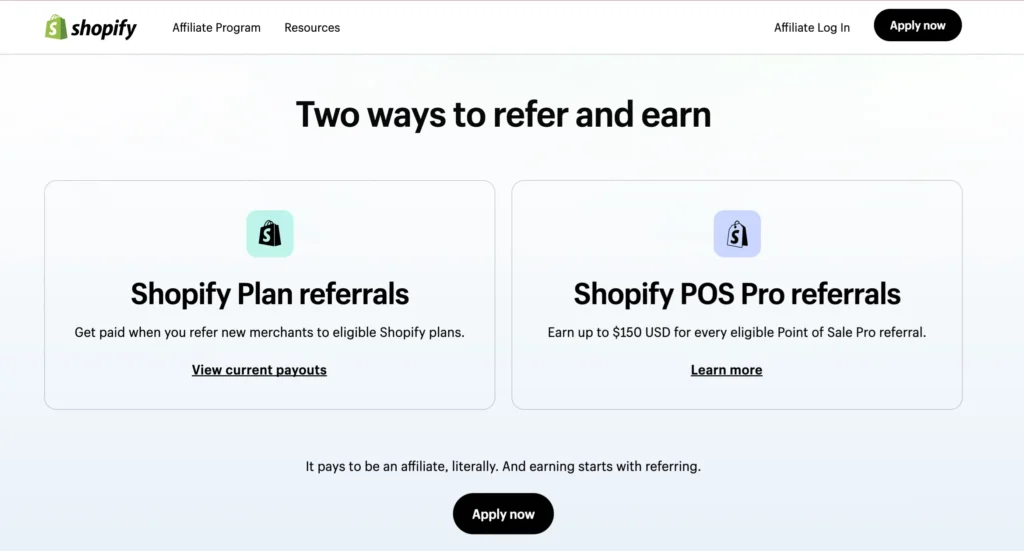
Shopify leans heavily on its thriving affiliate program to raise global brand awareness. With thousands of affiliates, the Shopify team keeps its program simple and clear.
The team recruits well-informed brand ambassadors, such as entrepreneurs, educators, and social media influencers. Partners earn fixed commissions for each successful referral with no upper limit on how much each affiliate can make. This streamlined setup encourages people to join and simplifies commissions for this massive network.
Affiliate marketing allows SaaS brands to keep up with competitors and ad influx
For SaaS brands facing rising competition and advertising overload, affiliate marketing is the ideal channel to invest in. Traditional affiliates, comparison sites, and content creators connect with people at every step in the customer journey. Best-fit partners will reach your target audience and encourage users to sign up. With the right tools and strategy, you can launch an effective partnership network and keep it running successfully.
FAQs about SaaS affiliate marketing
SaaS affiliate marketing is a type of partnership that rewards publishers such as deal sites, bloggers, influencers, and customer advocates for driving traffic to your website. These types of partnerships build and inspire communities to purchase your technology.
Using a partnership management platform like impact.com is the best way to find right-fit partners. The impact.com Marketplace lets you search curated affiliate collections and lists, helping you zero in on the affiliates that can attract your target audience. AI-driven recommendations and advanced filters find a wide range of skilled affiliates and creators.
Research shows that SaaS affiliate commissions range from 20-70% and depend largely on the product. Consider your product type, profit margins, and target audience to determine commission rates. Also, consider the value each partner brings. For instance, you may want to pay higher commissions to affiliates that bring in more sales and lower rates to those who receive fewer conversions. Sometimes, fixed rates make more sense, and other times, percentage-based rates work best. A fixed and percentage-based rate combination may be more suitable in certain cases.






